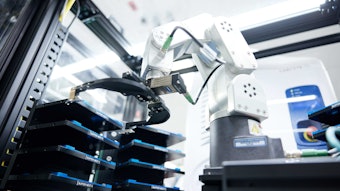Throughout the past decade, technologically important progress has been realized concerning the isolation, separation, identification and quantification of the volatile components released by odoriferous substances such as flowers or fruits, without in any way altering the living matter. This mild and convenient method, termed dynamic headspace chromatography, allows enrichment of the most delicate products prior to their injection into a gas chromatograph.
Since the advent of gas chromatography, at the beginning of the 1960s, the technique of static headspace, which implies direct injection of a vapor in equilibrium with a liquid or a solid sample kept in a confined space, has been widely employed. But this technique has low sensitivity, which limits its application to the analysis of only the major volatile components. Dynamic sampling is much more effective by permitting efficient enrichment of volatile, medium-volatile, and even sparingly volatile minor constituents, This method involves the adsorption of components from the gas phase surrounding the sample onto a solid, porous material, using the same principle as filtration through gas-mask cartridges. Evidently, static and dynamic headspace samplings will give different results, Activated carbon was mainly used until the end of the 1970s, but later discontinued when it was shown that it generated numerous artifacts, especially during thermal resorption. More successful were porous synthetic polymers, such as Porapak and Tenax, especially in environmental research.
At present, the headspace analysis of volatile products has reached such perfection and sensitivity that it has become the ideal tool for measuring the behavior of volatile odorants applied onto human skin or hair. Thus, it is now possible by chromatograpbic analysis to continually monitor the emanations from such a living and delicate surface, Whereas the technique is simple in principle, it is very sophisticated and much more complicated in practice, where efilciency, reproducibility and sensitivity during sampling, injection, separation, detection and quantification of the individual perfumery ingredients are crucially important.










